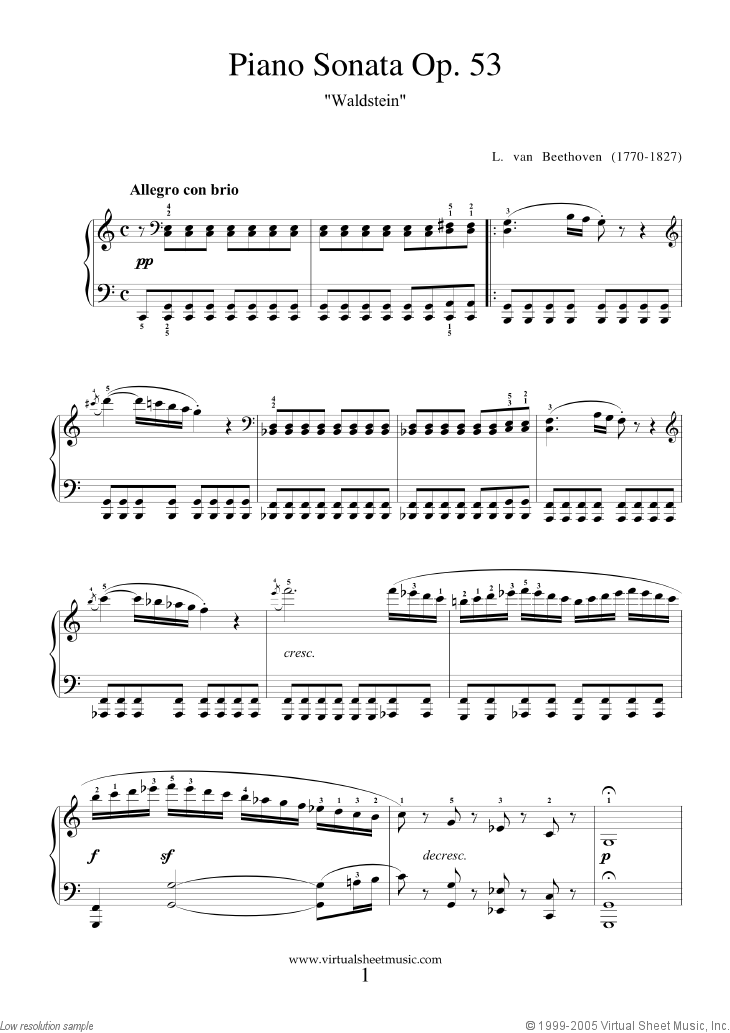Beethoven Tempest Sonata 3rd Movement Pdf Files
Beethoven's 'Tempest' Sonata, 3rd Movement. Beethoven 'Tempest' Sonata - 3rd Movement Wilhelm. There are lots of places on the web where you can get MIDI files. [PDF] - Piano solo - Classical. Beethoven: Sonata No. 17 in D Minor, Op. Piano Sonata No. 17 in D Minor Tempest Op. 2 Piano solo.

The Piano Sonata No. 17 in D minor, Op. 2, was composed in 1801/02. It is usually referred to as 'The Tempest' (or Der Sturm in his native German), but the sonata was not given this title by Beethoven, or indeed referred to as such during his lifetime.
Beethoven Moonlight Sonata Movement 3
The name comes from a reference to a personal conversation with Beethoven by his associate in which Schindler reports that Beethoven suggested, in passing response to his question about interpreting it and Op. 57, the 'Appassionata' sonata, that he should read Shakespeare's Tempest.
Although much of Schindler's information is distrusted by classical music scholars, this is a first-hand account like any other that any scholar reports. The British music scholar says in A Companion to Beethoven's Pianoforte Sonatas: With all the tragic power of its first movement the D minor Sonata is, like Prospero, almost as far beyond tragedy as it is beyond mere foul weather. It will do you no harm to think of Miranda at bars 31–38 of the slow movement.
But people who want to identify Ariel and Caliban and the castaways, good and villainous, may as well confine their attention to the exploits of Scarlet Pimpernel when the Eroica or the C minor Symphony is being played (pg. The first movement alternates brief moments of seeming peacefulness with extensive passages of turmoil, after some time expanding into a haunting 'storm' in which the peacefulness is lost. This musical form is unusual among Beethoven sonatas to that date. Concerning the time period and style, it was thought of as an odd thing to write; a pianist's skills were demonstrated in many ways, and showing changes in tone, technique and tempo efficiently many times in one movement was one of them. The development begins with rolled, long chords, quickly ending to the theme of the exposition.
There is a long recitative section at the beginning of this movement's recapitulation, again ending with fast and suspenseful passages. At the recapitulation, the theme of the development is again repeated in a different key. Second movement. The third movement is a sonata-rondo in the key of D minor. It is at first flowing with emotion and then reaching a climax, before moving into an extended development section which mainly focuses on the opening figure of the movement, reaching a climax at bars 169–173. The recapitulation, which is preceded by an extensive cadenza-like passage of semiquavers for the right hand, is followed by another transition and then another statement of the primary theme. The refrain undergoes phrase expansion to build tension for the climax of the movement at bar 381, a fortissimo falling chromatic scale.
References. Retrieved 2017-11-20. Anton Schindler (Constance S. Jolly, trans). Beethoven As I Knew Him. First published 1966 by Faber and Faber, London. Republished by The University of North Carolina Press, Chapel Hill.


External links.: Scores at the (IMSLP). covering the compositional process on Beethoven's Piano sonata op. 2. by on Beethoven's Piano sonata op.
2. from the. For a public domain recording of this sonata visit Wikimedia Commons has media related to.